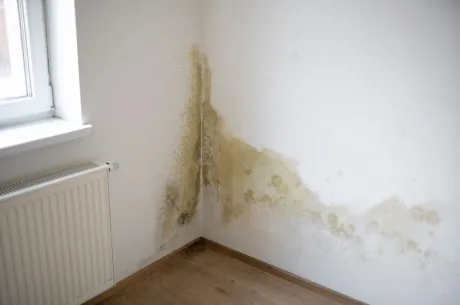Picture this: the ominous drip of water in your basement, the smell of dampness creeping up the stairs, the fear of unseen damage lurking beneath. Whether it’s from pesky drainage issues or sudden flash floods, water infiltration can wreak havoc on your home’s basement. That’s why learning how to waterproof your basement is critical.
In this article, we’re diving deep into the art of waterproofing your basement. Say goodbye to soggy floors and hello to peace of mind as we explore effective strategies to keep your basement dry and your worries at bay. Let’s get started.
How to Waterproof Your Basement
Keeping water out of your basement is essential to prevent water damage and maintain a healthy home environment. Here are some tips on how to waterproof your basement:
- Conduct a thorough inspection. Prior to commencing any waterproofing endeavor, thoroughly examine your basement for preexisting concerns like water leaks, wall or floor cracks, or areas exhibiting moisture accumulation. Rectifying these issues is imperative before proceeding with the application of waterproofing materials.
- Clean rain gutters. Blocked gutters may cause roof water to pour directly into your home’s foundation, increasing the risk of basement flooding. Remove any debris, such as leaves or branches from the gutters and check the gutters for loose particles if you have asphalt roofing. Tighten any loose gutter straps and spout extensions. If there is gunk in the downspouts, clean them by pouring water into the downspouts with a garden hose.
- Extend downspouts. To protect your basement from excess water, downspouts should extend at least five feet away from your house. This can be achieved by adding plastic or metal extensions to the downspouts. Alternatively, consider having an underground drain pipe installed. This system can send gutter run-off away from your house.
- Slope the ground away from your foundation. Make sure that the ground next to your foundation slopes away from the foundation to divert rainwater away from your home. The “crown” of dirt around your house should slope at least six inches over the first 10 feet in all directions.
- Seal gaps in the basement. Water may leak into your basement through gaps or cracks around plumbing pipes or cracks in concrete walls. Seal these gaps with polyurethane caulk or hydraulic cement. However, if water comes through the floor, sealing gaps won’t do the trick and you need to fix the groundwater problem.
- Implement a vapor barrier. Alongside waterproofing membranes, contemplate incorporating a vapor barrier on basement walls to impede moisture from penetrating porous surfaces. Plastic sheeting or specialized vapor barrier products can be applied before finalizing basement wall insulation and drywall installation.
- Install a French drain. For serious water problems, install a curtain drain such as a French drain. This type of drainage system consists of a series of underground pipes that divert water away from your home’s foundation.
- Waterproof interior basement walls. Condensation that forms on basement walls may be prevented by applying sealant on the walls. You can waterproof foundation walls with concrete coatings, silicate-based concrete sealers, waterproofing paint, or plastic sheets or panels. Alternatively, waterproof the exterior walls of the basement to fix gaps in the foundation, although it’s a costly job that requires excavating around the house.
- Ensure proper sealing of basement windows and doors. Guarantee that the windows and doors in your basement are adequately sealed to deter water infiltration. Utilize weatherstripping, caulk, or sealant to close off any gaps or fissures surrounding these entry points.
- Consider exterior waterproofing. Consider applying waterproofing sealants or coatings to the exterior of your basement walls. This can help prevent water from penetrating the foundation.
- Install a sump pump. These devices provide protection against flooding by pumping out water that has accumulated in the sump basin. When the water level in the basement floor rises, the sump pump will automatically discharge the water outside your house. Learn how to choose a sump pump and how to test a sump pump.
- Install window well covers. Basement window wells can be vulnerable entry points for water and debris. Installing window well covers is a straightforward and effective solution. These covers are typically made of sturdy materials like plastic or metal. They also keep leaves, dirt, and other debris out. Be sure to choose covers that are easy to remove in case of emergency exit needs and maintain them to ensure they remain in good condition.
- Install a backwater valve. In areas prone to sewage backups, a backwater valve is a critical addition to your plumbing system. This one-way valve is typically installed in your sewer line and prevents sewage from flowing back into your basement during heavy rains or flooding. It allows wastewater to exit your home but automatically closes if the flow reverses, protecting your basement from sewage backups.
- Maintain landscaping. Landscaping around your home can either help or harm your efforts to keep your basement dry. Trimming trees and shrubs near your house reduces the risk of their roots penetrating your foundation.
- Explore exterior grading enhancements. If water consistently accumulates near your home’s foundation, explore options for enhancing exterior grading. This may involve adding soil or incorporating landscaping elements to redirect water flow away from the structure.
- Monitor basement humidity. Basements are often more humid than other parts of your home due to their underground location. High humidity levels can lead to mold growth and moisture-related problems. Using a dehumidifier in your basement helps maintain an optimal humidity level, usually between 30-50%. Regularly empty the dehumidifier and clean its filter to ensure its effectiveness. Use a hygrometer to monitor humidity levels and adjust your dehumidifier settings as needed.
- Regular inspections. Conducting routine inspections of your basement and its surroundings is a proactive approach to identifying and addressing potential water intrusion issues. Look for signs of water stains, cracks in the walls or floor, dampness, or mold growth. Check the condition of your foundation, sealant, and any existing water management systems. Address any issues you find promptly.
- Consider professional help. Many of these tips on how to waterproof your basement are DIY-friendly. Yet, if you encounter persistent water issues or extensive damage in your basement, it’s wise to consult with professionals. A waterproofing contractor can assess your specific situation and recommend appropriate solutions, such as exterior or interior waterproofing, sump pump installation, or drainage improvements. In cases of structural concerns, involving a structural engineer can help identify and address the root causes of water intrusion effectively, ensuring the long-term integrity of your home. Their expertise can save you time, money, and stress in the long run.
Conclusion: How to Waterproof Your Basement
In conclusion, here’s how to prevent water damage in your basement:
- Conduct a thorough inspection to identify any potential issues.
- Clear rain gutters to prevent water buildup.
- Extend downspouts to redirect water away from your home’s foundation.
- Slope the ground away from your foundation.
- Seal gaps in the basement to prevent water infiltration.
- Implement a vapor barrier for added protection against moisture.
- Install a French drain to manage groundwater.
- Waterproof interior basement walls to prevent water seepage.
- Ensure basement windows and doors are properly sealed.
- Consider exterior waterproofing options for comprehensive protection.
- Install window well covers to shield basement windows.
- Install a backwater valve to prevent sewage backup.
- Maintain landscaping to aid in water drainage.
- Explore exterior grading enhancements to improve water flow.
- Monitor basement humidity levels to prevent mold growth.
- Conduct regular inspections to catch issues early.
- Consider seeking professional assistance for complex problems.
For Water Damage Restoration, Contact the PuroClean Remediation Experts!
In case your basement has flooded, call a water damage contractor immediately. To avoid safety hazards, don’t enter the basement, and make sure not to make direct contact with floodwater. For flood water damage repair and mold remediation services, contact your local PuroClean office.




